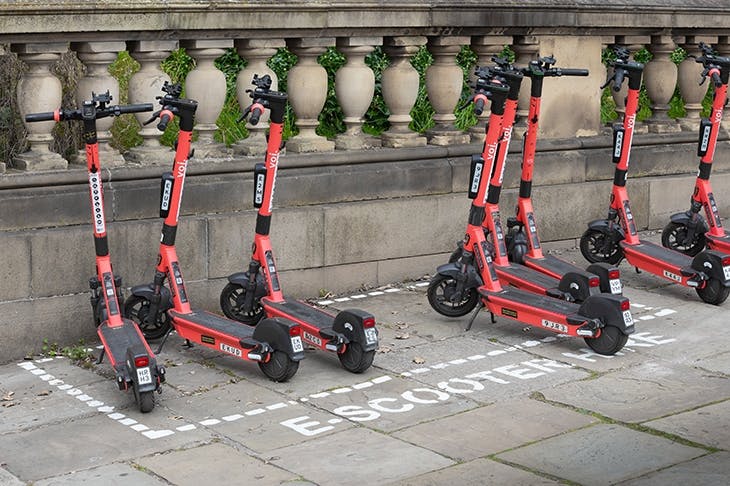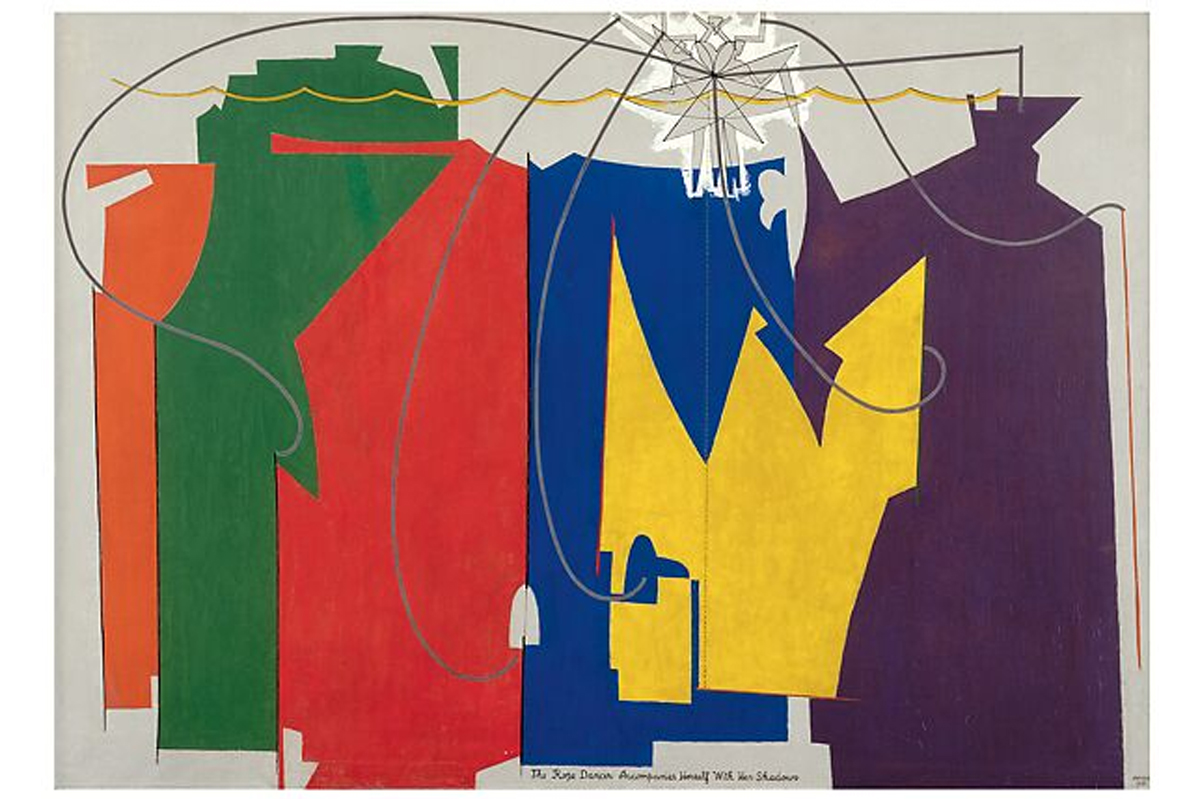I get around New York City on what I newly perceive as a dumpy, sluggish pushbike. Mayor Bill de Blasio has invested extensively in the city’s cycling infrastructure — much to the resentment of motorists, and often for good reason. Removing whole lanes from congested thoroughfares is rarely justified by the modest number of car trips that cyclists obviate. Still, given the soaring popularity of two-wheeled transport, when chugging against a headwind alongside the Hudson I ought to have plenty of company.
Indeed, I do. But although signage on Manhattan’s busy West Side cycle lane warns sternly ‘No e-bikes or e-scooters’, the advisory is farcical. Those signs might as well read ‘E-bikes and e-scooters have right of way; prehistoric dependents on pedal-power should join the 21st century’. Between the previous summer and this past one, the electrified craze reached a tipping point; by my rough calculation, over half the traffic on New York’s cycle lanes now plugs in. We’re not only talking about vehicles with a tiny ‘assist’ to give aging athletes a boost uphill, either. Today’s e-bikes readily whizz past at 30mph, leaving us Luddites behind in the dust. Some of the latest models are enormous, with wheels like Harleys. They merely emit a subtle mosquito whine, so you can’t hear them coming when they overtake. And boy, do they overtake.
E-scooters are everywhere. As their riders reliably wear a serene, superior expression, weaving effortlessly through clumps of wheezing technophobes must be fun. Legally, e-scooters are limited to 15mph, but their speed controls are easily disabled, which explains why the more powerful scooters can neck-and-neck with the e-bikes doing 30. Moreover, New York is awash with e-everything that’s on a small, single-user scale: e-skateboards, eWheels (electric unicycles), e-tricycles, hoverboards, Segways. Even the fleet of once-dawdling metropolitan Citi Bikes is going electric. Ditto most mopeds and many proper motorcycles, all of whose riders gleefully avail themselves of cycle lanes, the rules be damned.
For unsurprisingly these e-people are even more blithely oblivious of traffic laws than the troglodytes in Lycra. They career down one-way streets in the wrong direction and zip through solid red lights. They never get tickets. They’re too nimble and too fast.
At first, I welcomed e-bikes for their emotional neutrality. Pushbikers are competitive with one another, and I get tired of having to contend with other cyclists’ egos. When one party is relying on brawn and the other on a battery, no one need take an e-vehicle’s faster pace personally. Yet lately, e-everything has become one more peril for us outmoded hyperventilators to negotiate. Churning that West Side bike path, I feel like a lone duck trying to survive in the zooming futuristic mayhem of The Jetsons. And don’t imagine that e-people feel embarrassed by not getting much exercise. They clearly view regular cyclists with contempt: you’re exhausting yourself, you’ll take twice as long to get where you’re going, and you’re an idiot.
There’s a larger point here. The electric car requires a heavy battery with an inconvenient tendency to burst into flames. It remains limited in range and demands a costly new infrastructure. Its manufacture employs minerals monopolized by China, which controls 80 percent of the lithium-battery supply chain. The electric car presents a recycling headache. It’s still too expensive. And once EVs become widespread, no one has solved the hardly incidental little problem of the means by which all this extra power will be generated. By contrast, the small-scale e-vehicle works. Accordingly, no governmental edict has commanded the conversion to this technology. People have adopted small-scale electric transport because it’s cheap, fast and far less arduous to ride than the poky pushbikes of yesteryear.
This is how tech revolutions happen: they make life better, and no Big Brother need declare from on high that from here on in bikes must have motors. De Blasio hasn’t felt obliged to subsidize the purchase of all these new contraptions zinging past me. In kind, I didn’t make the switch from typewriter to computer in the 1980s because I was mandated to convert to digital by statute. A computer made writing easier, and I embraced it with joy. Parliament didn’t ordain the Industrial Revolution. Successful technological transformations are bottom-up.
The forced, top-down imposition of costly immature technologies in the interest of fighting climate change is doomed to fail. Governments that foist devices like hydrogen boilers on their citizenries that only make everyone’s lives worse are certain to meet popular rage. Whether you’re convinced the cause is Brexit or COVID lockdowns, Britain’s current gasoline crisis unquestionably demonstrates how very far we are from a society that remotely functions without fossil fuels — in the absence of which food and other product deliveries cease, and droves of employees, including NHS staff, can’t get to work.
The switch to e-bikes and e-scooters occurred over a mere handful of years; on New York streets, the number of personal e-vehicles must have doubled since 2020. When groundbreaking tech is truly ready to go, it’s efficient and cost-effective, and people greet it with open arms.
The climate change lobby will only prevail by aligning a zero-carbon future with self-interest. Instead, activist rhetoric is punitive, puristic and harsh: get thee back to a donkey cart. Until and unless green tech improves our lives, it’s likely to face an almighty backlash.
This article was originally published in The Spectator’s UK magazine. Subscribe to the World edition here.

























